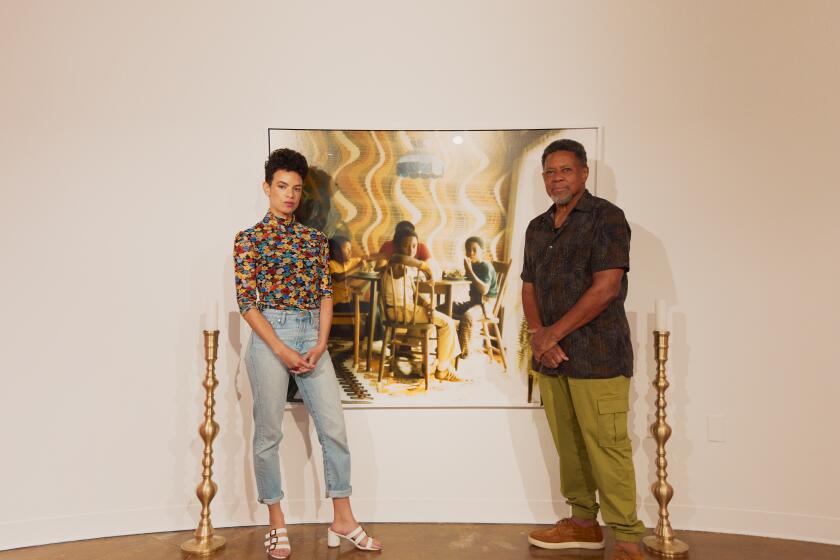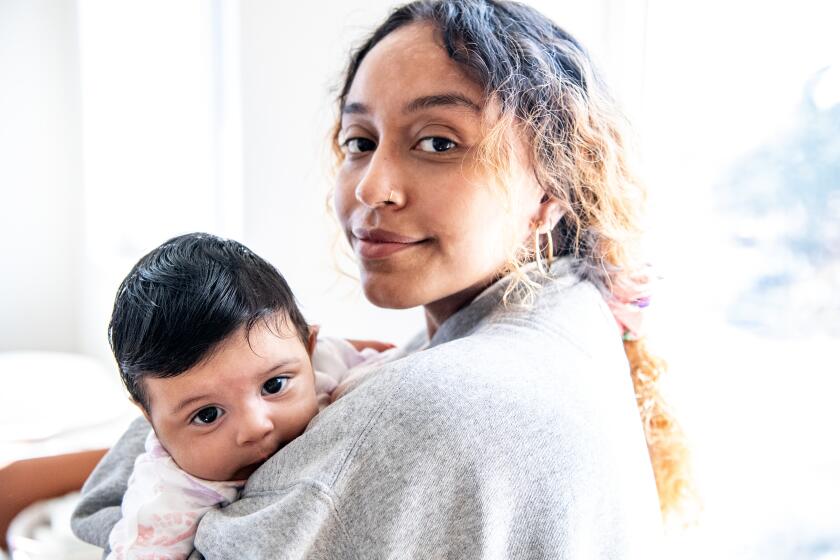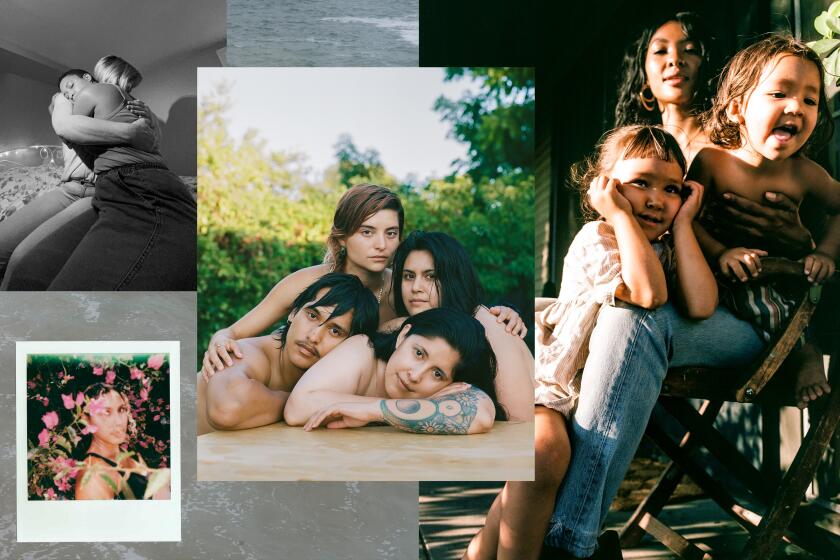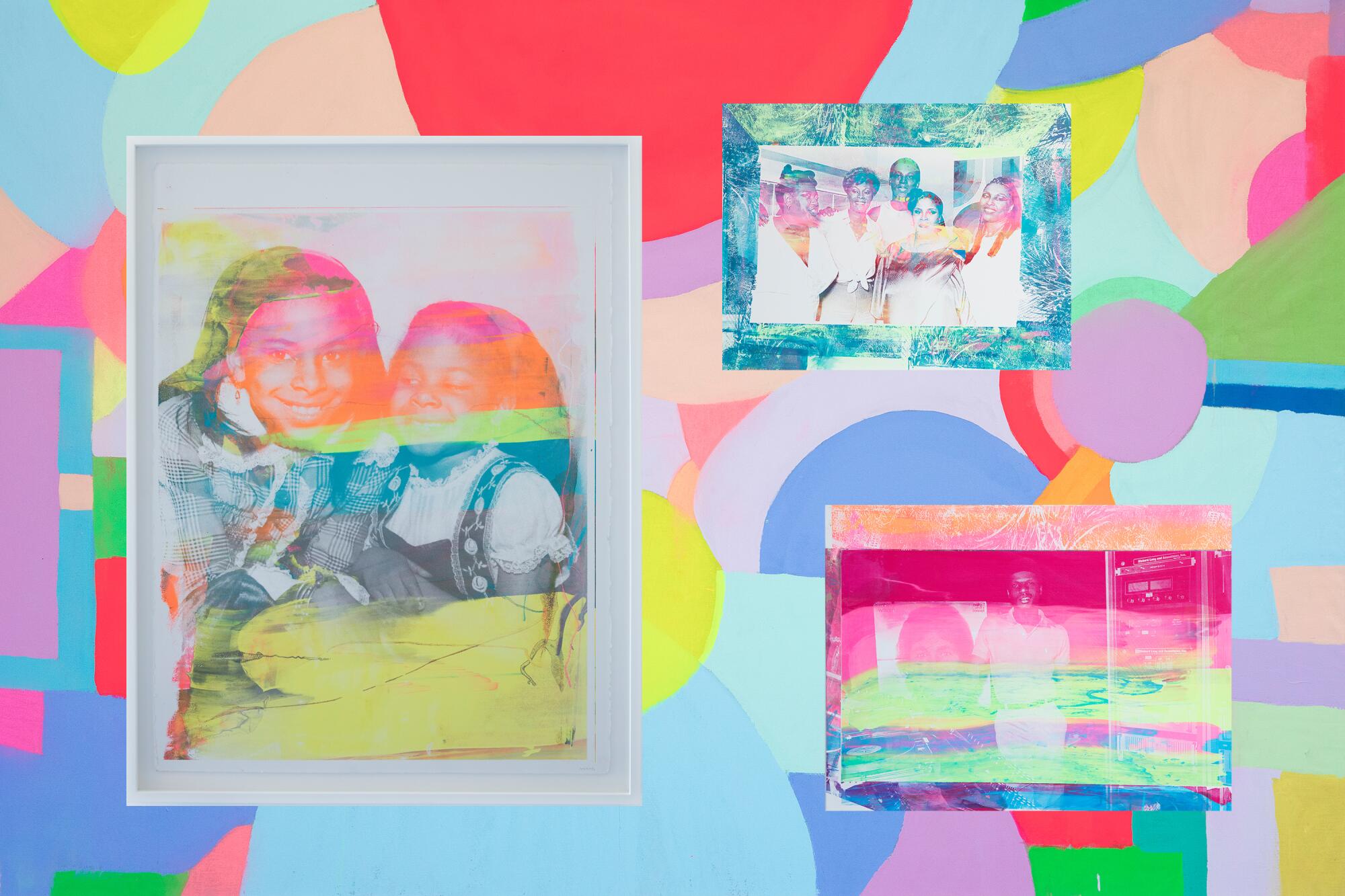
- Share via
This story is part of Parents Are Cool!, the third issue of Image, which explores the myriad ways in which L.A. parents practice the craft of care. See the full package here.
Adee Roberson is devoted to spirit work, to what Sobonfu Somé names in “The Spirit of Intimacy: Ancient African Teachings in the Ways of Relationships” as “a relation between life forces,” which binds us to each other, to ancestors, and allows us to fulfill our life’s purpose. I know this intimately, personally. Roberson is home, the kind Sylvester sings about. They’re a cornerstone in my “real life,” like Toni Morrison advised. A friend. Auntie to my child. Roberson is also an artist, a painter, screen printer, filmmaker and musician. Roberson has been a maker of objects, installations and sonic experiences since the early 2000s. It was Roberson’s work that brought us together a decade ago, and it is Roberson’s interdisciplinary practice that has guided and shaped our friendship.
Roberson’s commitment to spirit enables their work to wonder and manifest as needed; it also allows them to grow internally and extend themselves, forging community. Spirit work entangles art and caretaking. The desire and need to create objects and ephemeral conditions is emboldened by Roberson’s commitment to creating and sustaining family, to living by their moral compass in career and life. I — and we — are the benefits of such an ethic; my world is elevated and maintained by this notion of work.
Roberson is based in L.A. but is in Jamaica for summer 2021. We chatted just before they left and during their early days on the island via voice memos. We spoke about art shaping friendship. About working between and across boundaries. We talked about flexibility, a commitment to porousness and nonhierarchical structure, our shared love for improvisation and chance, openness, movement, possibilities, love. Thank you, Adee, for being on this adventure with me.
Essence Harden: Good morning.
Adee Roberson: Good morning, Essence. I’m just getting up. Doing some things before I head to Jamaica for a few months.
EH: I’ve been rereading “The Spirit of Intimacy: Ancient African Teachings in the Ways of Relationships” by Sobonfu Somé. Early on, Somé discusses how the community, as a whole, raises children and how children thus belong to the community. Your aunt is your mother, your uncles are your father, children have many parents, and adults are equally responsible for many children. For Somé, this relationship between community, between “spirits,” fosters reliance and a belonging which allows one to prosper in their life’s work. I’ve been thinking a lot about this and how your family appear in your work, as a kind of a multitude of parents and parenting. There’s something there, I think, in other types of parenting and belonging that feels deeply attuned to the work that you’re doing.
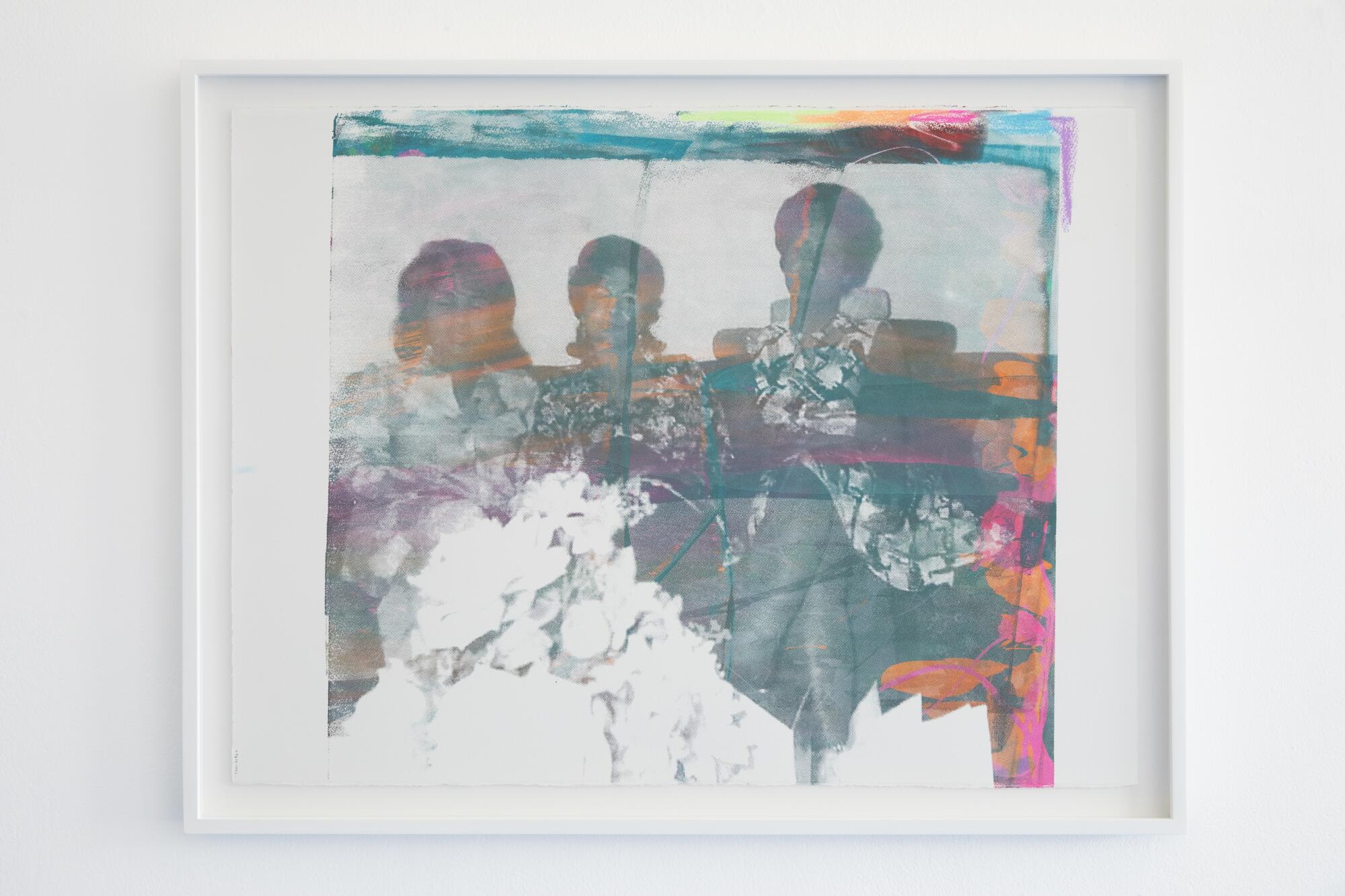
AR: Yeah, I love that specific part in the book too. As it refers to my work, I’m constantly working with images of my grandmother, her siblings, my mom and her siblings. In a recent video piece, I used footage from my cousin’s — I think it was her — seventh birthday party and my grandmother was there, all of my aunts, my grandmother’s sister and her husband and my mom’s cousin. And then it was me and all my cousins. I grew up in a house that was matriarchal. I only lived with women until I was 15.
But my uncles, aunts, and grandma were similar to parents, because there were significant parts in my life — potty training, learning how to swim — that wasn’t with my mom. Also, I lived with my aunt and uncle too for two months in the summer, and I feel like those bonds are still there. When I see my aunt, we have this other kind of closeness that is a really maternal thing. We had a really spiritual bond, much like with my grandmother.
And so what I love from that book is just talking about, like the spirituality of intimacy and how it’s a spiritual connection, the way we connect to people, and it’s boundless. And, of course, our parents birthed us and take care of us and raise us, but in an ideal world, we would all be connected in this kind of larger thing, and it wouldn’t be so burdensome just being a single person and thinking about having a kid myself. It’s like, I don’t really have that family structure like I had when I was younger. And I know we’ve talked about this a lot. And it’s not really set up in a way for that to happen now.
More stories from Image
Melina Abdullah talks to Angela Flournoy about how we can all get to freedom
These L.A. photographers offer a vision of what parenting can be
Dave Schilling unpacks L.A.’s obsession with dad hats
Jamilah Lemieux riffs on the L.A. wave of going topless in public
We picked some of the coolest parents in L.A. culture. Now you can pick which one you want to be
Growing up felt like there was that boundlessness, and I know there is this longing with me and my work to come back to that place, because I don’t want to forget that, even though many of those people are gone, that they’re still surrounding me … it’s spirit.
EH: I think these feelings/sensations show up in the work as a type of intimate object space. The images you use of family, but also in the way colors are presented, collapse space and time. In your work, nothing (materials, hue, scene) belongs to a single thread or individual.
AR: When my family see the portraits and the videos I create, it brings back so many memories for them. It evokes a lot of emotion. My mom’s cousin, who sent me a lot of the photos in the latest series I did at Artist Curated Projects, has been feeling really lonely. They said, “Every time I look at these photos, I just think about how all of these people are gone now.” But when I look at those photos, I think of how they’re all around me, and how it’s not just about being in a body. It’s about spirit.
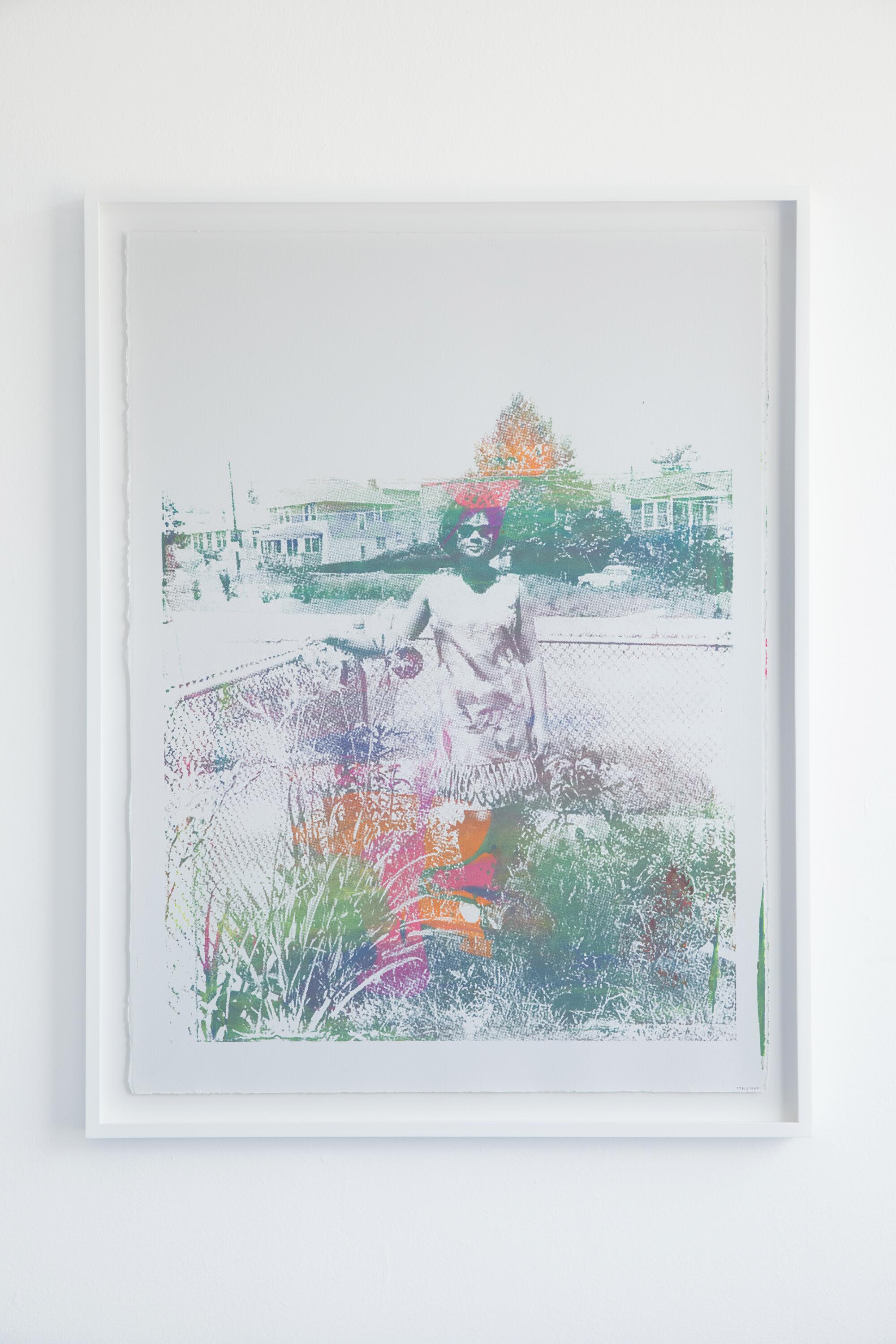
There this one image I used for my show of my grandmother’s sister — we called her Auntie Ni Ni. It’s her in her front yard at her house in the Bronx, the first house she moved to when she moved from Jamaica. When my mom saw it, she was like, “Oh, my God. I remember us playing in that front yard.” That piece became the heart of the show, I think because of the multidimensionality of it. She was my grandmother’s older sister, and she held this particular grounded space for my family. When I was making the work, she became the center, and I kind of built everything else off that. There was something about that photo, about her being in the front yard of her home. She’s wearing sunglasses, and the green paint I used goes on the grass, and then it goes above her head. I thought about the third eye, the ground connecting to the Earth and just how powerful Black women and femmes are and how they’re constantly holding space for all of us. She did such an amazing job of holding that space at her home every Sunday. She made rice and peas; we had a little salad. [She] and my grandmother and her husband, they played dominoes, they drank rum; as a kid, somebody would always give you $1 or a piece of strawberry candy.
Just having her in the space and centering the other pieces around her, there was something I wanted to tap into with that, that feeling. … That’s a goal of mine in life. … I think I do it sometimes, but I’d love to do it more. Hold that space for my extended family and have it be this atmosphere where you’re just being seen and taken care of.
EH: This reminds me of how Senga Nengudi, Maren Hassinger and Barbara McCullough talked about making work with each other but also about sharing childcare duties. That being an artist was not only about belonging to yourself but the way that you were able to do your work was through and with other people. How do you think L.A. informed or pushed this collective aspect within your practice?
AR: Yes, I think the work and the stuff around my art is really about legacy and inheritance, how to archive that, and how to use that as a tool for healing. I don’t have any family here … but I’ve been coming to California for 20 years, and I’ve always had really close friends here. In that sense, I do have family here, but it’s not blood, a lot of my chosen family is here. When I moved to Oakland in 2005 from New Orleans, I had this vision and this dream of being in this Black, queer community. My girlfriend at the time lived in Oakland, so I ended up moving to the West Coast.
Coming to L.A. was different. You had moved down here, Anna lived here, and I had a few other friends peppered in. There were people here that I was really inspired by, like Lauren Halsey, and people in a broader art history I admired; you mentioned some above. I also end up moving to places based on just ease and openness I felt when there.
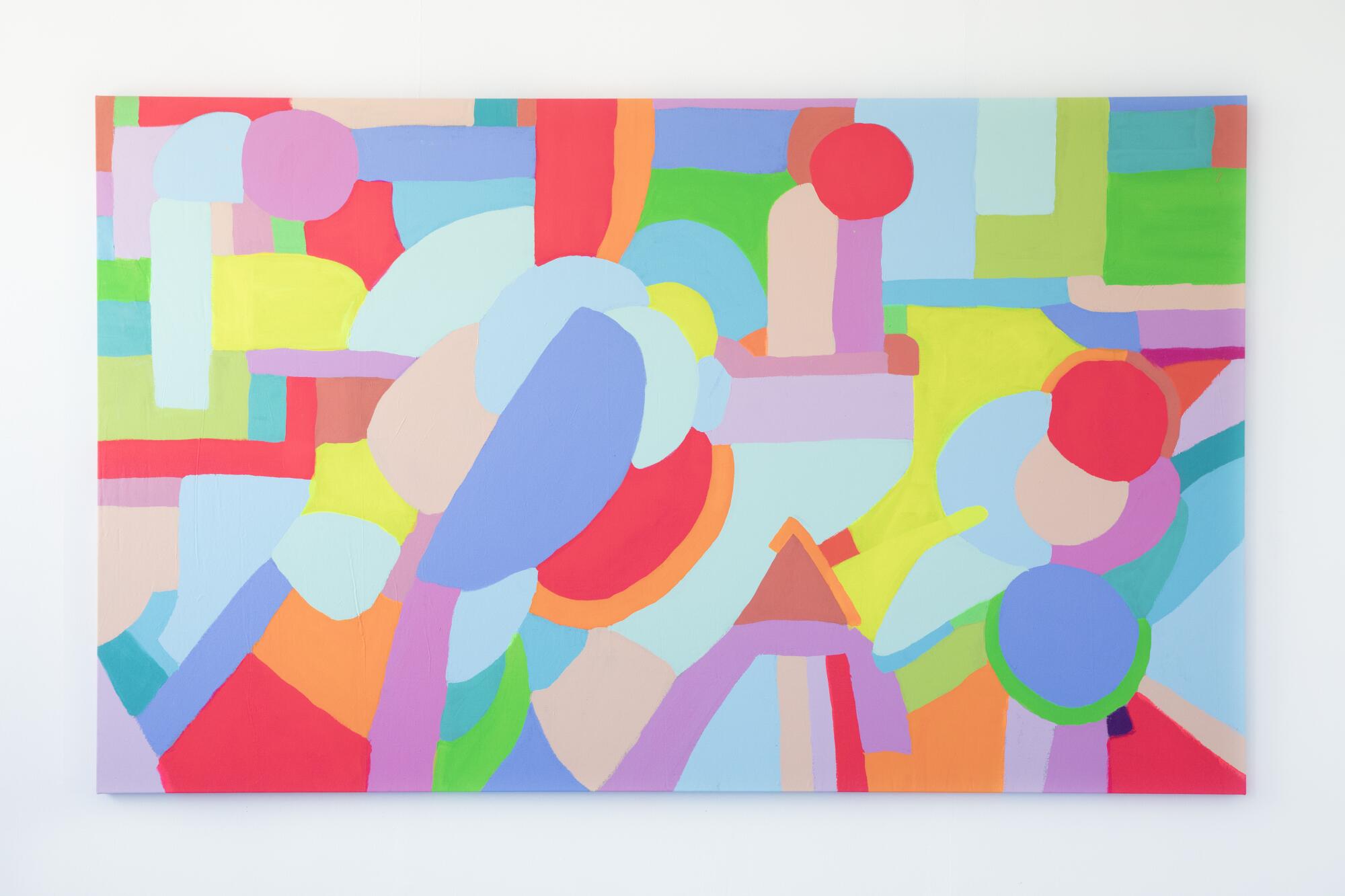
I don’t really identify with one place. I was born in South Florida and have some family from Georgia, Florida, Jamaica and New York. But I have a family that’s really migratory, everyone moves. So movement is a big part of my practice.
There’s an energy of acceptance here that I’ve just been really drawn to and that has actually helped my work expand and be more accepting and has also helped me as a person. It might just be because there’s more actual open space here, more space here to kind of expand.
Sadie Barnette on her father’s activism, Angela Davis, FBI
::
EH: It’s been a week, but now you’re in Jamaica. I think Kingston? Give us the deal: What does it feel like? What does it smell like? What does it taste like?
AR: I’ve been drinking mint tea every day here. It’s so good. They just put the fresh mint in the hot water from here and it’s like, “What the fuck?” It’s so good.
EH: Tight. You were saying that you go where your energy makes the most sense, where there is a welcoming and an ease to collaborate. And I thought, “Oh, damn. Are we parenting ourselves?”
If so much about quality parenting is about caretaking, building, sustaining and doing the work “from the ground up,” as you like to say (LOL), then moving and being in a community feels like a type of self and community. Are we as a community, as a group of friends, are we parenting each other?
If I think of how projects are born, how work is grown, stretched and reaches new dimensional spaces, often through conversation but also direct caretaking (cooking, body work, sharing drinks and resources) ... for myself, curating was really guided and aided, much like a parent can do, via the support of both you and Sadie [Barnette]. You held and continue to hold my hand to do my work. Is parenting another way that we can think about how we all belong to each other?
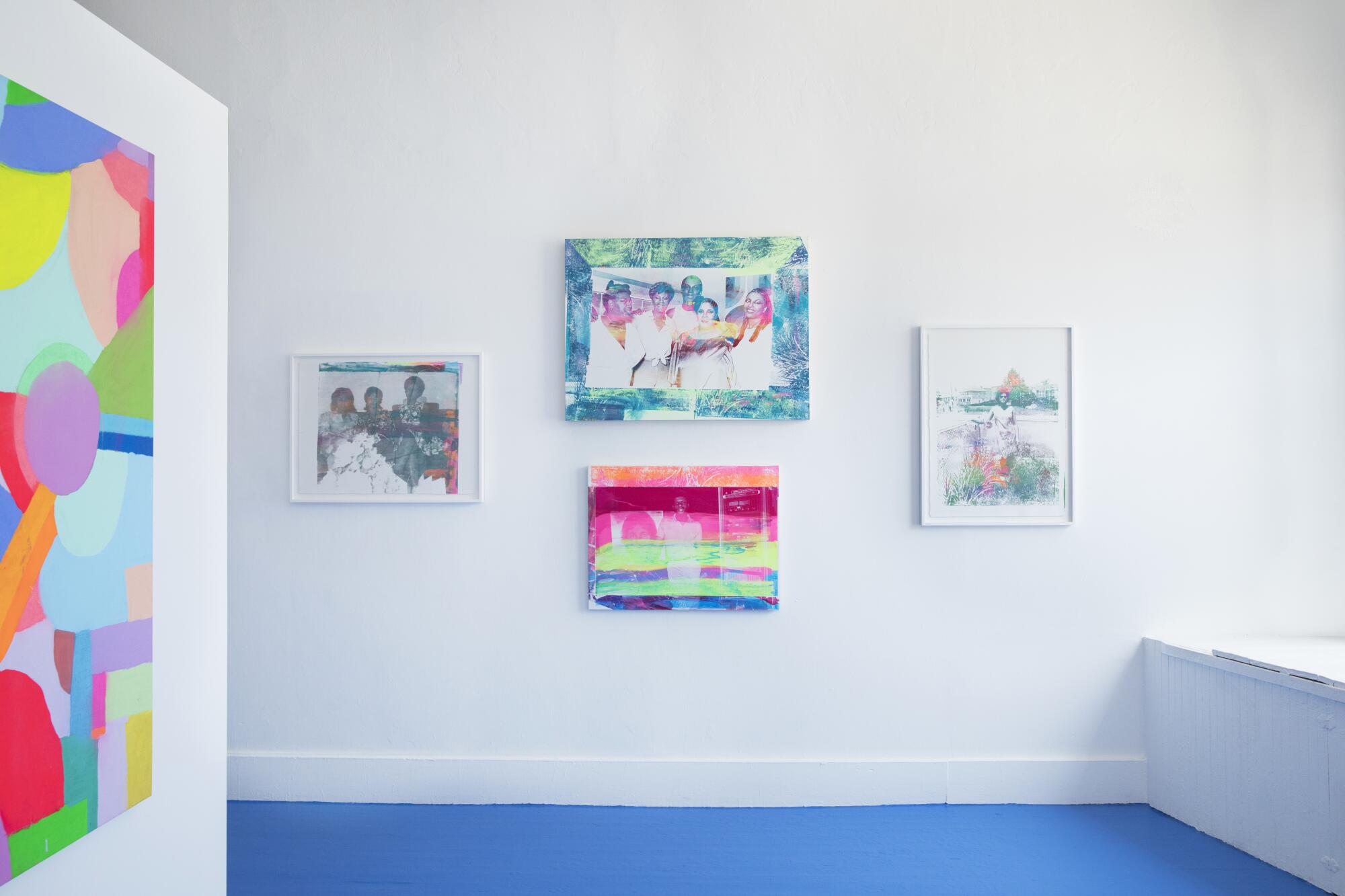
AR: Yes, I think we do. There’s a lot of parenting happening. There’s a lot of family happening. And there’s an expansive way to look at what family is and what parents are. I think we create those spaces, and I wish those spaces were more in our infrastructure of society. If we need to go to the hospital, who our family is and who is able to come to the hospital and see us? Who’s able to be guardians — can there be multiple guardians? I think we can reimagine these kinds of spaces and structures, and when we do, they’re really beautiful. We create them because they’re necessary, and we have to take care of each other.
